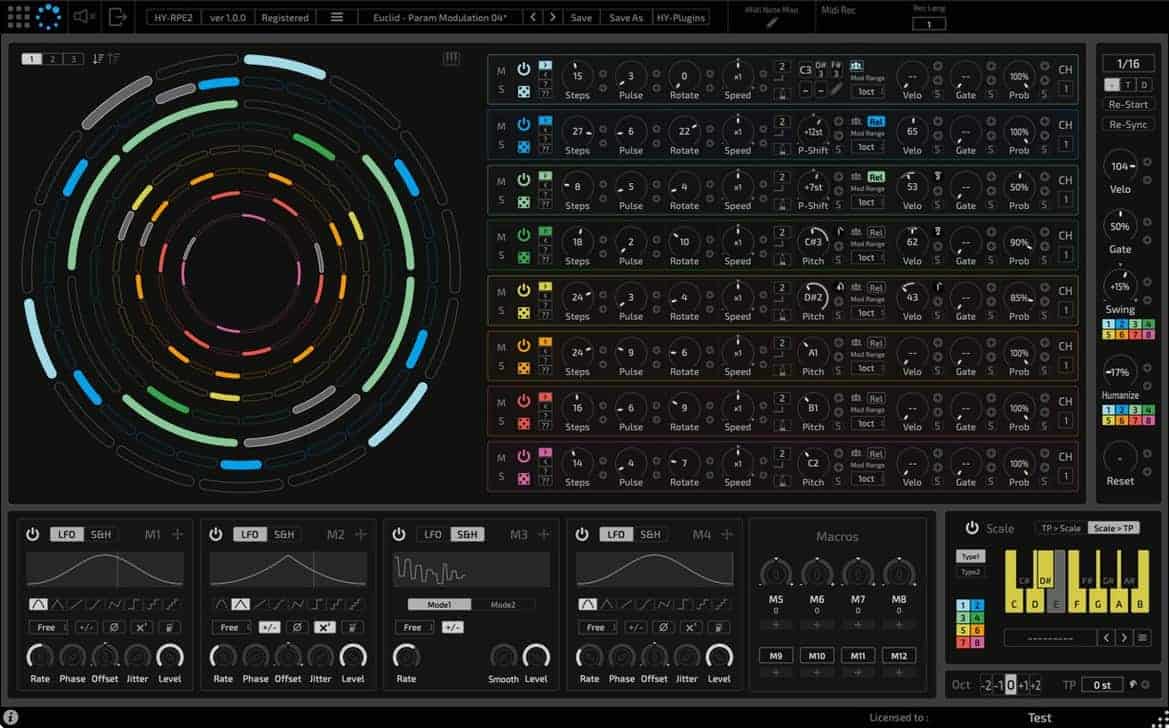
One of these models is called a digital waveguide which is based on the phyical model in which acoustic waves propagate through tubes or pipes. Unlike other synthesis techniques, it does not make use of any samples as a starting point and focuses on how the sound is produced in the physical sense through the study of materials. Physical modelling denotes a sound synthesis method that relies on mathematical and physical models to generate sounds. In this tutorial, we will look into circular buffers as a way to implement delay lines. This allows us to store all the samples included in the previous block to be accessed in the current block, only to be overwritten by the current sample block for the next iteration. In the digital domain, delay lines are often implemented using a data structure referred to as a circular buffer.Ī circular buffer can be essentially implemented as an array where the index wraps around itself in order to create a circular data structure that matches the size of the sample buffer block. In the analog domain, delay lines were implemented by introducing an actual physical extension such as a spring to delay the propagation of waves. By using multiple delay lines and summing the seperate signals back together at different intervals, we can create the vast majority of digital signal processing out there. Let's start by defining this DSP terminology.Ī delay line is a fundamental tool in DSP that can be used in a wide array of applications including simulations of reverberation spaces, sound synthesis, filter implementation and classic time-based effects such as delays, choruses, phasers and flangers.įundamentally, a delay line is very simple and allows us to delay a certain signal by a number of samples. In this tutorial we are introducing two new DSP concepts that allow for signal processing in different ways: Delay Lines and Physical Modelling. The demo project plugin window Note If you have a MIDI controller, you can also choose to connect it instead of using the on-screen keyboard throughout this tutorial. In Xcode, you can change the target in the top left corner of the main window as shown in the following screenshot: The project is conceived as a plugin but you can run it as a standalone application by selecting the proper deployment target in your IDE. If you need help with this step, see Tutorial: Projucer Part 1: Getting started with the Projucer. Warning If using the PIP version of this project, please make sure to copy the Resources folder into the generated Projucer project. Unzip the project and open the first header file in the Projucer. If you haven't done so already, you should read that tutorial first.ĭownload the demo project for this tutorial here: PIP | ZIP.


This tutorial leads on from Tutorial: Add distortion through waveshaping and convolution. Recent versions of Xcode and Visual Studio include this support. Incorporate a delay line to create intricate echo patterns in the stereo sound field.Ĭlasses: dsp::ProcessorChain, dsp::Gain, dsp::Oscillator, dsp::Convolution, dsp::WaveShaper, dsp::Reverb Warning This project requires a compiler that supports C++14 features. Implement a realistic string model by means of physical modelling.


 0 kommentar(er)
0 kommentar(er)
